
Piercing the veil
A new exhibition at Buxton Contemporary finds a rich complexity in the shadowy terrain between life and death.
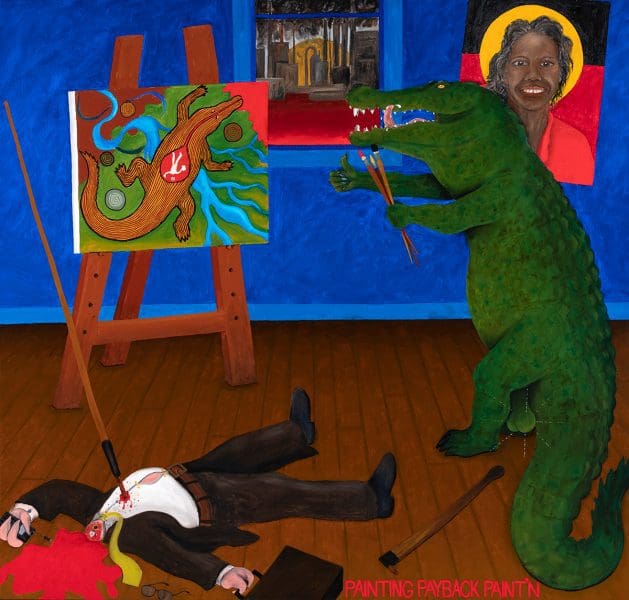
Gordon Hookey (Waanyi people, Australia, b.1961, Cloncurry, QLD), Payback Painting, 2005, acrylic on linen, 162 x 170 cm, Griffith University Art Collection. Purchased 2017. © The artist. Courtesy of Milani Gallery, Brisbane. Photo: Carl Warner.
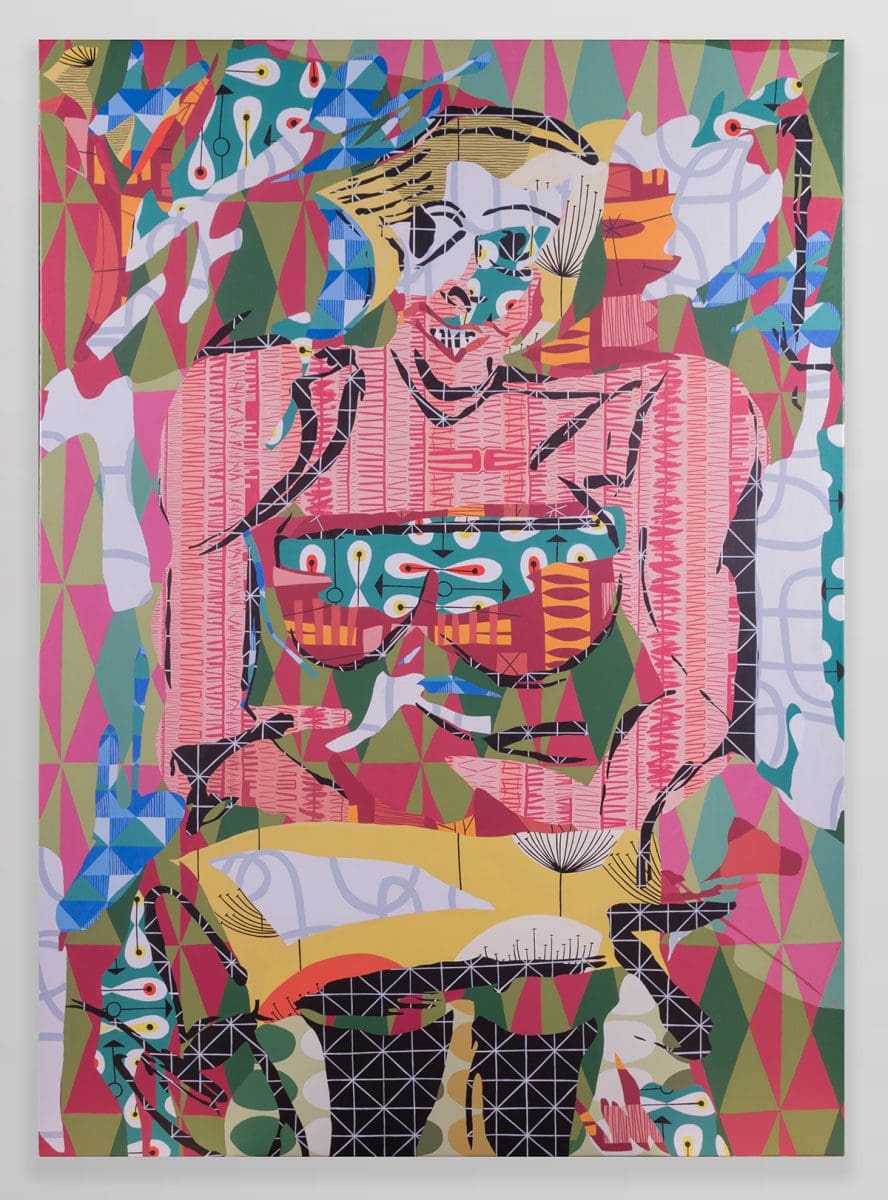
Natalya Hughes , Woman V, 2018, Acrylic on canvas, 155 x 114cm, Courtesy of the artist and Milani Gallery, Brisbane, © The artist. Photo: Nicholas Aloisio-Shearer.

Krista Berga, My rage fingers my strength, 2018, black bronze, edition 1/5, 37 x 26cm irreg. Collection: Beth Jackson, Brisbane, © The artist.
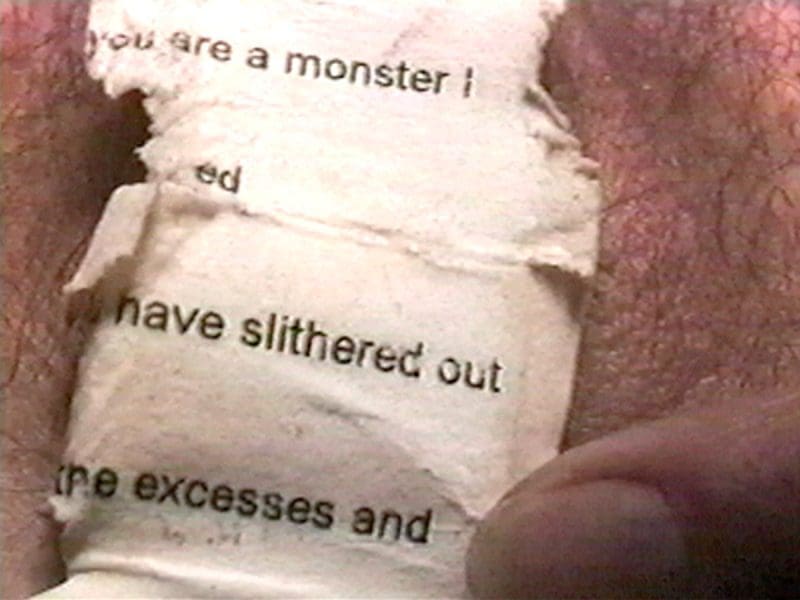
Carolee Schneeman (1939-2019, USA), Interior Scroll – The Cave, 1975-1995, single channel video, 3:4, colour, sound, dialogue, 7:30 mins. Edited and Produced by Maria Beatty. Courtesy of Electronic Arts Intermix, New York, © The Estate of Carolee Schneemann.
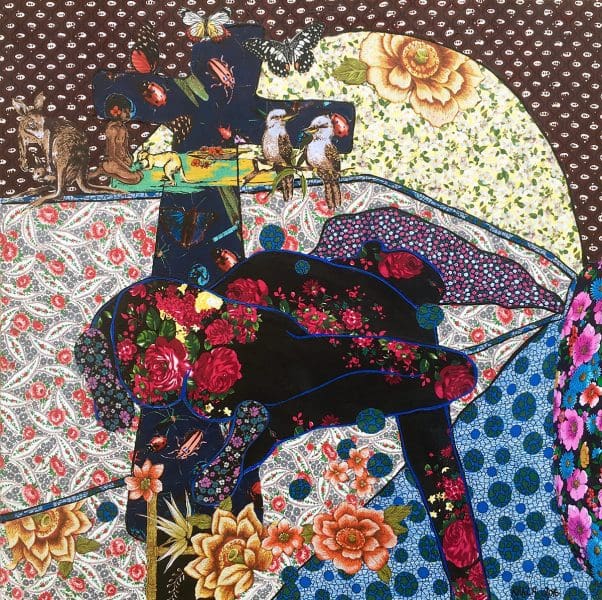
Karla Dickens, Sleeping Beauty III 2016, Mixed media, 120 x 120 cm. Courtesy of the artist and Andrew Baker Art Dealer, Brisbane, © The artist. Photo: Mick Richards.
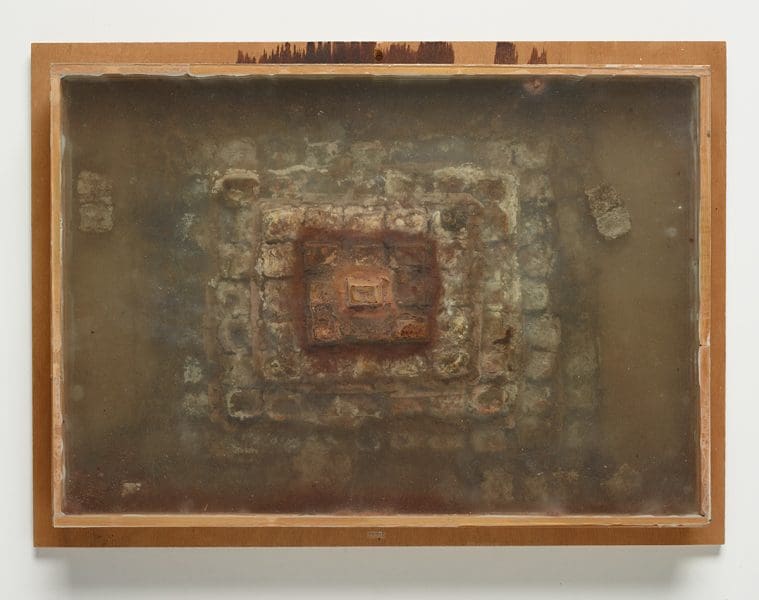
Dieter Roth (1930–1998, Germany/Switzerland), Insel (Schokoladenpyramide), c.1971, chocolate, iron and plaster on wooden board in Plexiglass box, mounted on wooden board, 35 x 50 x 8cm plexiglass; 40 x 55cm board., Collection: Art Gallery of New South Wales – Gift of Geoff Ainsworth AM 2015. Donated through the Australian Government’s Cultural Gifts Program, © The Estate of Dieter Roth. Courtesy Hauser & Wirth.

Ian Haig, The Video Hole, 2016, Single channel video work (Maya animation, 1920 x 1080 HD, mp4 file), colour, sound, no dialogue (Sound Darrin Verhagen), 10 mins (loop). Courtesy and © the artist.
The group exhibition The Abyss brings together 25 Australian and international artists whose work disrupts the psyche. Curated by Naomi Evans, it looks at the strategies behind these artworks, and how they succeed in challenging beliefs and creating spaces for incongruencies to coexist.
Evans places historically significant works alongside contemporary pieces, and begins the exhibition with the body and the idea of knowledge drawn from kinaesthetic experience, or tactile learning. A 1995 video shows American artist Carolee Schneemann reprising her ground-breaking Interior Scroll. First performed in 1965, this performance saw Schneemann drawing knowledge, in the form of a scroll of text, literally out of her own body. The video is placed near a bulging bronze by Krista Berga, a Brisbane-based artist who Evans believes is on par with Louise Bourgeois. “I think she’s extraordinary,” the curator says.
Evans then moves onto the idea of the informé, or formlessness, presenting artists who emphasise the aesthetics of the creative act. She sees this as a way of “scraping back the membranes.” One of the works here is Snake Oil, 1997, by Hany Armanious, which was made by casting a synthetic resin into water. Evans calls it an attempt to “cast things that are almost impossible.”
Swiss artist Dieter Roth’s Insel (Schokoladenpyramide) [Island (Chocolate Pyramid)], c1971, uses materials in another unsettling way. Made from a mix of cocoa and fats, the work is, according to Evans, “delectable” but “over time, it rots and congeals.” It is shown alongside a tiny and very rare artists’ book, and another produced in an edition of 2000, which Roth made in the 1960s in a challenge to ideas about artistic quality and quantity.
Other artists, like Karla Dickens and Paul Yore, use adornment to lure viewers into confronting subjects. Yore’s work, Happy are Ye Poor, 2017, is a dazzling mix of collage, colour and embroidery that connects ideas around Rupert Murdoch and the pope. Evans points to the way Yore sets up doubts and internal contradictions in his works as a way of reaching a point of truth. What The Abyss refers to is “this potentiality, and this rich space of not knowing,” she says. “Incongruities aren’t resolved. We don’t have reconciliation but there’s still a need to resist.”
Natalya Hughes also makes tactical use of adornment. Woman I and Woman V, 2018, are re-workings of Willem de Kooning’s famous paintings of women, but with every surface and inch of skin covered in pattern. “I am very interested in the ways pattern and decoration are assumed to be marginal and peripheral in certain conceptions of the visual,” says Hughes. In her work adornment becomes an assertive act and a way to refocus.
Hughes has taken some of the patterns from 1950s textiles. “I wanted the association with the domestic and feminised cultural terrain (that I imagine de Kooning was keen to keep out) at the centre of the work,” she says. “This inclusion alone changes so much of the representation and how it might speak to women and their place in art.”
The exhibition closes with powerful works by Gordon Hookey, Ramesh Mario Nithiyendran and Gordon Bennett, whose 1996 text The Manifest Toe informed the curator’s thinking about the grotesque and how shock can be used in art. The Abyss also includes Tony Albert, Anatasia Booth, Juan Davila, Chantal Fraser, Karl Fritsch and Francis Upritchard, Ian Haig, Louise Hearman, Emily Hunt, Robert Pulie, Tim Schultz, Tyza Stewart, Sophie Takách, Wart, and Jemima Wyman.
The Abyss: Strategies in contemporary art
Griffith University Art Museum
25 July – 28 September